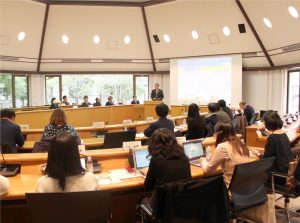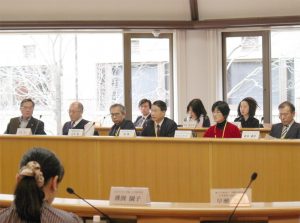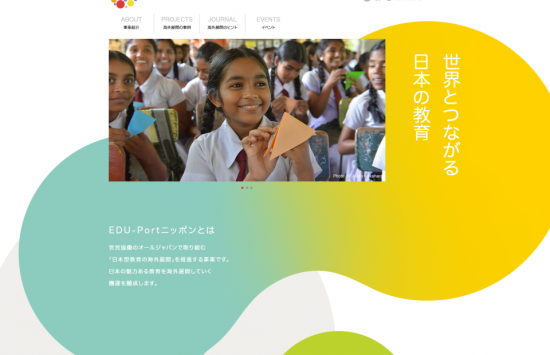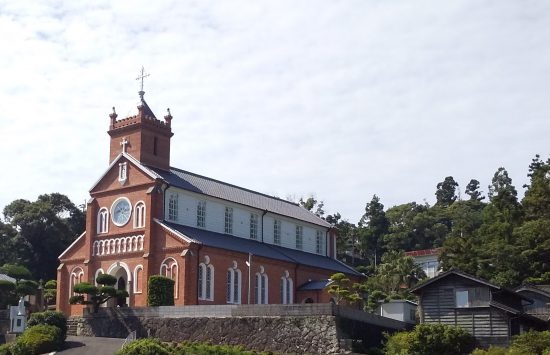RESEARCH
Looking Back at the Conference on Academic Exchange in the Pacific Rim
The Consortium for Global Japanese Studies was founded in September 2017 to build links among research institutes involved in global Japanese studies and global Japanology within Japan. The Consortium attempted to jointly promote global Japanese studies as a field of research and to share information on educational programs and objectives for this field. Nichibunken has served as the base and secretariat of the Consortium since its start. In its third year, the Consortium held its largest-scale event, the Conference on Academic Exchange in the Pacific Rim, December 21–22 in 2019 at Nichibunken. Despite being held at the height of the busy year-end season, the conference was attended by 52 people, including observers.
Diverse cross-border research on Japanese studies is lively outside Japan, particularly in the Pacific Rim region. Growing out of recent advancements in this region, the Conference was planned to provide a venue for discussing the perspectives presented by leading scholars from research institutes in Japan and abroad. Addressing two topics—research and educational practice in Japanese studies—the discussion allowed participants from both Japan and abroad to deepen their research and educational endeavors in global Japanese studies.

Keynote speech on the first day.
The first day began with a keynote speech, “Cross-border Intellectual Exchange: Thoughts on A Future of Co-existence,” by Hsü Hsing-ch’ing, president of Chinese Culture University in Taipei. The morning of the second day featured a panel discussion among scholars from the Consortium member institutions on “Global Japanese Studies: Issues and Prospects.” The members of the panel exchanged views on global Japanese studies education and presented reports on tasks to be tackled. At the afternoon round table, “The Possibilities of Pan-Pacific Academic Exchange,” participants heard individual reports on the history and current status of Japanese studies in East Asia, Southeast Asia centering on the ASEAN countries, Oceania, and Hawaii, and then engaged in participant-wide discussion.

Panel discussion on the second day.
Thinking back over the two-day conference, I cannot but confirm that the symposium afforded a good opportunity for “Japanese studies” as an area studies field within the Pacific Rim region to benefit “global Japanese studies” in Japan. It also allowed individual participants to think anew about the meaning of “global Japanese studies”—Japanese studies in international perspective.





